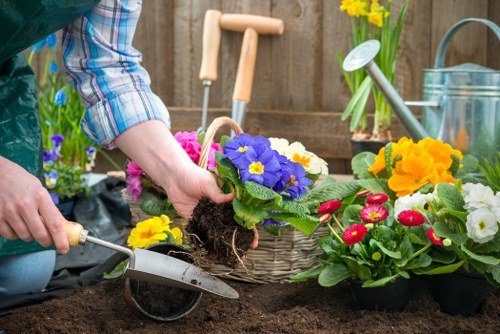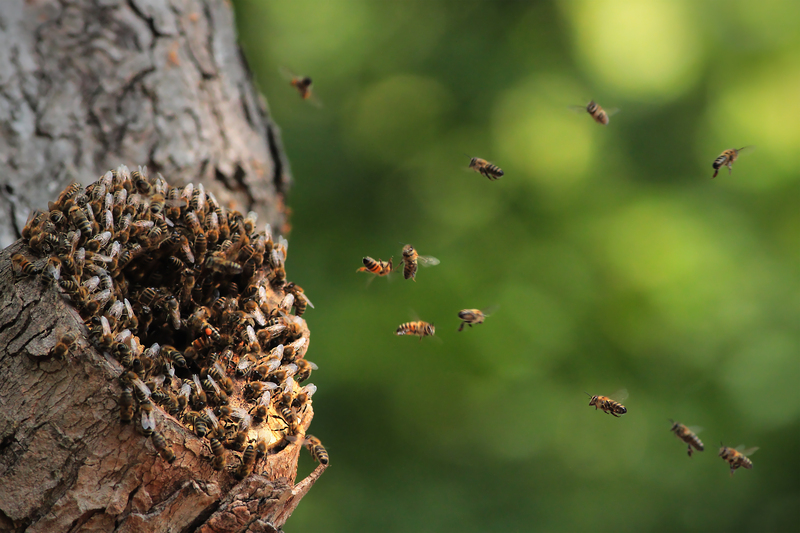Mastering Hedge Trimming in Wood Green
 Hedge trimming in Wood Green is an essential aspect of maintaining a beautiful and healthy garden. Whether you're a seasoned gardener or a novice, understanding the nuances of hedging can transform your outdoor space into a serene and organized environment. In Wood Green, with its unique climate and soil conditions, selecting the right techniques and tools for hedge trimming is crucial.
Hedge trimming in Wood Green is an essential aspect of maintaining a beautiful and healthy garden. Whether you're a seasoned gardener or a novice, understanding the nuances of hedging can transform your outdoor space into a serene and organized environment. In Wood Green, with its unique climate and soil conditions, selecting the right techniques and tools for hedge trimming is crucial.
Regular hedge maintenance not only enhances the aesthetic appeal of your property but also promotes the growth and longevity of your hedges. By keeping your hedges well-trimmed, you prevent overgrowth, reduce the risk of pests, and ensure that your plants receive adequate sunlight and air circulation.
 There are various types of hedges commonly found in Wood Green gardens, each requiring specific trimming methods. From the dense and formal boxwood hedges to the more informal and wild rose hedges, understanding the characteristics of each type is key to effective trimming.
There are various types of hedges commonly found in Wood Green gardens, each requiring specific trimming methods. From the dense and formal boxwood hedges to the more informal and wild rose hedges, understanding the characteristics of each type is key to effective trimming.
Choosing the Right Tools for Hedge Trimming
Investing in the right hedge trimming tools can make the task significantly easier and more efficient. Essential tools include hedge shears, electric trimmers, and loppers. Each tool serves a distinct purpose, and selecting the appropriate one depends on the type and size of the hedge you are dealing with.
For smaller hedges, manual hedge shears offer precision and control, allowing for detailed shaping and fine trimming. On the other hand, electric trimmers are ideal for larger hedges, providing speed and power to handle extensive growth without exhausting the gardener.
Proper maintenance of your trimming tools is also vital. Regular cleaning, sharpening, and oiling of blades ensure that your tools remain effective and safe to use, extending their lifespan and performance.
Best Practices for Hedge Trimming in Wood Green
 Adhering to best practices can significantly improve the outcomes of your hedge trimming efforts. Firstly, it is recommended to trim your hedges during the growing season, typically in late spring or early summer, when the plants are most robust and resilient.
Adhering to best practices can significantly improve the outcomes of your hedge trimming efforts. Firstly, it is recommended to trim your hedges during the growing season, typically in late spring or early summer, when the plants are most robust and resilient.
When trimming, aim for an even shape, maintaining a balanced structure that allows light and air to penetrate the foliage. This not only enhances the visual appeal but also promotes healthy growth by preventing the development of weak or dead branches.
Additionally, avoid trimming too aggressively, as this can stress the plants and make them more susceptible to diseases and pests. Instead, opt for regular, moderate trimming sessions to maintain the desired shape and size.
Common Mistakes to Avoid
 One common mistake in hedge trimming is neglecting the natural growth pattern of the plants. Forcing hedges into unnatural shapes can lead to unhealthy growth and diminish the natural beauty of your garden.
One common mistake in hedge trimming is neglecting the natural growth pattern of the plants. Forcing hedges into unnatural shapes can lead to unhealthy growth and diminish the natural beauty of your garden.
Another pitfall is neglecting safety precautions. Always wear appropriate protective gear, such as gloves and safety glasses, and ensure that your tools are in good working condition to prevent accidents.
Lastly, failing to consider the specific needs of different hedge types can result in improper trimming techniques, harming the plants instead of promoting their health.
 In conclusion, hedge trimming in Wood Green is a rewarding endeavor that, when done correctly, can greatly enhance the beauty and functionality of your garden. By selecting the right tools, following best practices, and avoiding common mistakes, you can ensure that your hedges remain healthy, attractive, and a true reflection of your gardening skills.
In conclusion, hedge trimming in Wood Green is a rewarding endeavor that, when done correctly, can greatly enhance the beauty and functionality of your garden. By selecting the right tools, following best practices, and avoiding common mistakes, you can ensure that your hedges remain healthy, attractive, and a true reflection of your gardening skills.
